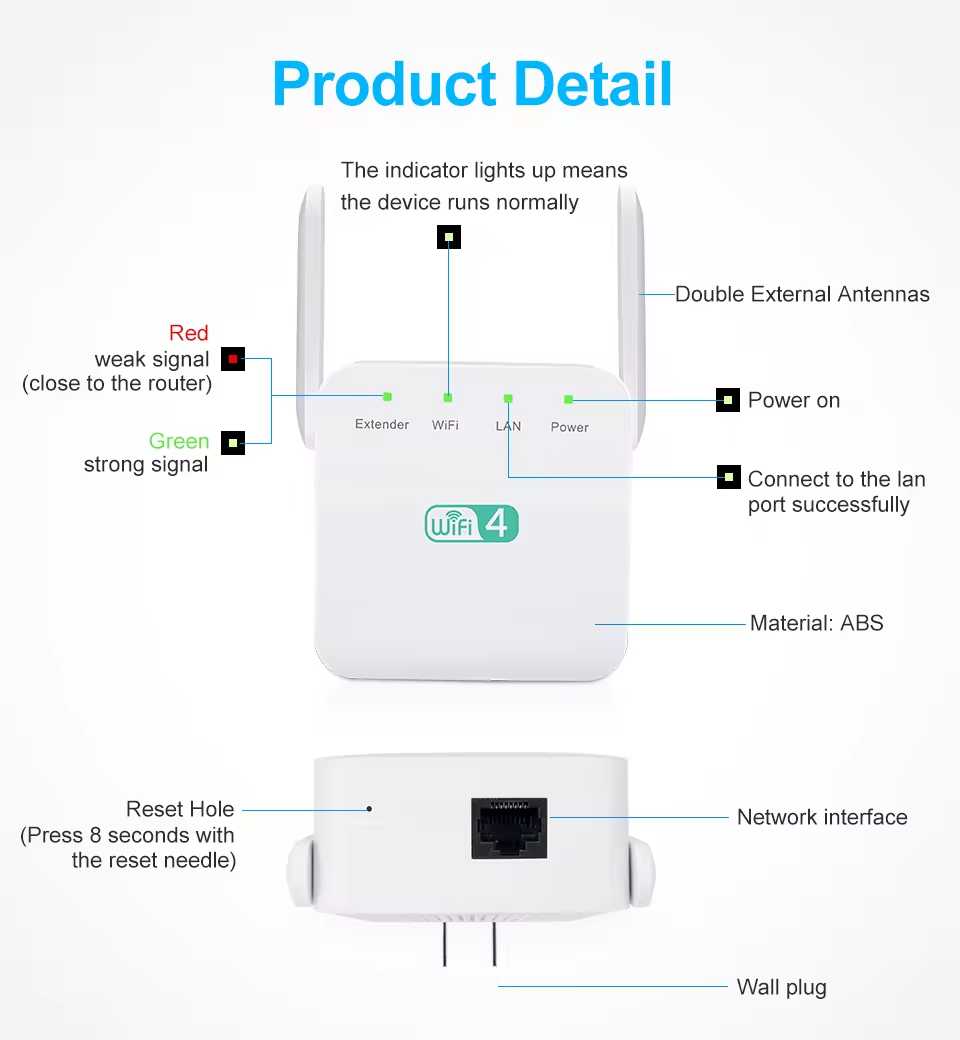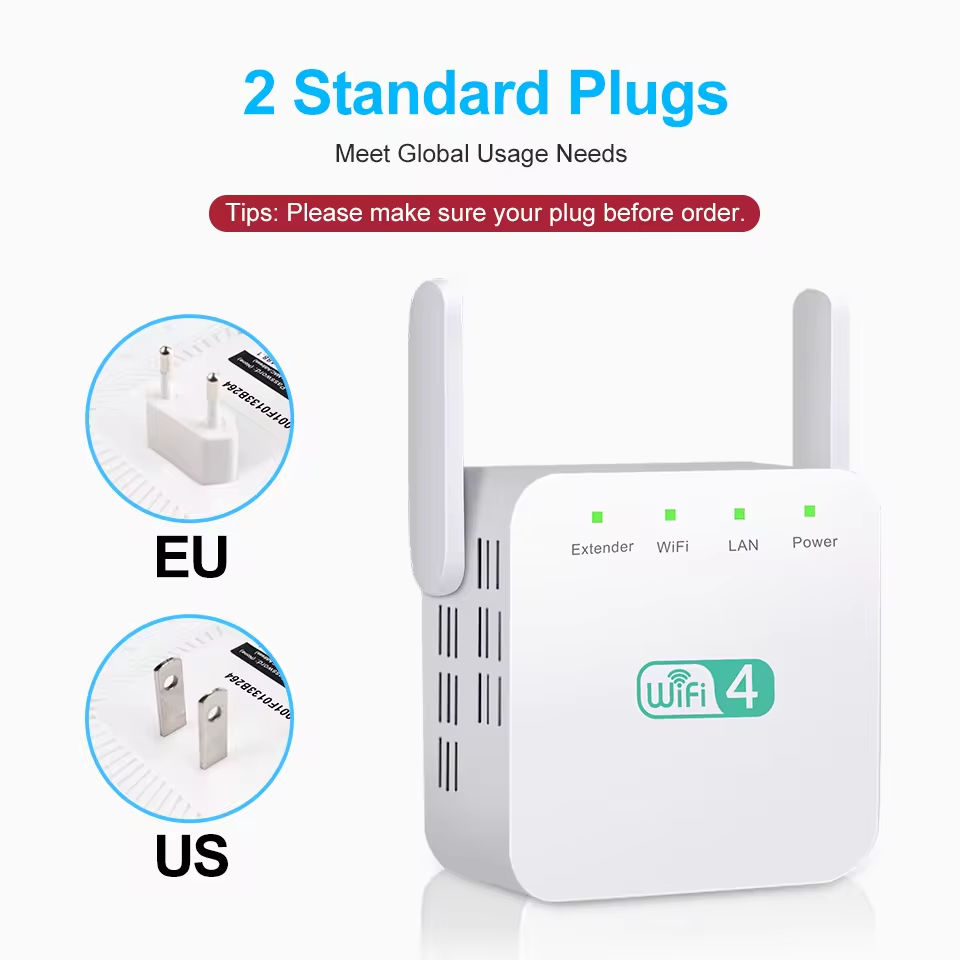In today's connected world, a strong and reliable WiFi signal is essential for both work and leisure. However, many people struggle with weak or inconsistent signals in certain areas of their homes or offices. This is where wifi repeaters come in. Understanding how these devices work can help you enhance your internet experience by extending your WiFi coverage. Let's dive into the details of WiFi repeaters and how they can boost your signal.
What is a WiFi Repeater?
A WiFi repeater, also known as a range extender, is a device that receives your existing WiFi signal, amplifies it, and then transmits the boosted signal. This helps to extend the coverage area of your WiFi network, allowing you to access a stronger and more reliable signal in areas that were previously out of range or had a weak connection.

How Do WiFi Repeaters Work?
WiFi repeaters work by taking the existing signal from your wireless router and rebroadcasting it to create a second network. Here’s a step-by-step breakdown of how they function:
Reception: The repeater receives the WiFi signal from your router. This initial signal can be weak, especially if the repeater is placed far from the router.
Amplification: The repeater amplifies the received signal. This involves boosting the signal strength so that it can be effectively rebroadcasted.
Transmission: The repeater transmits the amplified signal, extending the coverage area of your WiFi network. Devices within this extended area can then connect to the repeater just as they would to the router.
Benefits of Using a WiFi Repeater
Using a WiFi repeater offers several advantages:
Extended Coverage: Repeaters can help eliminate dead zones in your home or office by extending the reach of your WiFi network to areas where the signal was previously weak or non-existent.
Improved Connectivity: With a stronger and more reliable signal, you can enjoy smoother streaming, faster downloads, and a more stable connection for online activities.
Easy Installation: WiFi repeaters are generally easy to set up and configure, making them a convenient solution for improving your wireless network without extensive technical knowledge.
Choosing the Right WiFi Repeater
When selecting a WiFi repeater, consider the following factors to ensure you choose the right one for your needs:
Compatibility: Ensure the repeater is compatible with your existing router and supports the same WiFi standards (such as 802.11ac or 802.11n).
Range: Look for a repeater that offers a sufficient range to cover the areas where you need a stronger signal.
Speed: Opt for a repeater that can support high-speed connections, especially if you plan to use it for bandwidth-intensive activities like streaming or gaming.
Ease of Setup: Choose a repeater with a straightforward setup process and user-friendly interface.
Placement Tips for Optimal Performance
To get the best performance from your WiFi repeater, consider the following placement tips:
Central Location: Place the repeater midway between your router and the area where you need better coverage. This helps ensure it receives a strong signal to amplify.
Avoid Obstacles: Keep the repeater away from walls, metal objects, and electronic devices that could interfere with the signal.
Height Matters: Position the repeater at a height similar to that of your router, such as on a shelf or table, to maximize signal reception and transmission.

Conclusion
WiFi repeaters are a practical and effective solution for extending the coverage of your wireless network and boosting signal strength in areas with weak connectivity. By understanding how they work and choosing the right repeater for your needs, you can enhance your internet experience, ensuring a strong and reliable connection throughout your home or office. Whether you're streaming, gaming, or working online, a WiFi repeater can help you stay connected and enjoy a seamless internet experience.
 Trolink Joint With Tuya to Make Iot Benefit Every Family
Trolink Joint With Tuya to Make Iot Benefit Every Family
 5 Key Indicators for WiFi Module Selection You Have to Know !
5 Key Indicators for WiFi Module Selection You Have to Know !
 IOT module is the brain of smart products
IOT module is the brain of smart products
 What is the signal coverage range of the WiFi module chip?
What is the signal coverage range of the WiFi module chip?